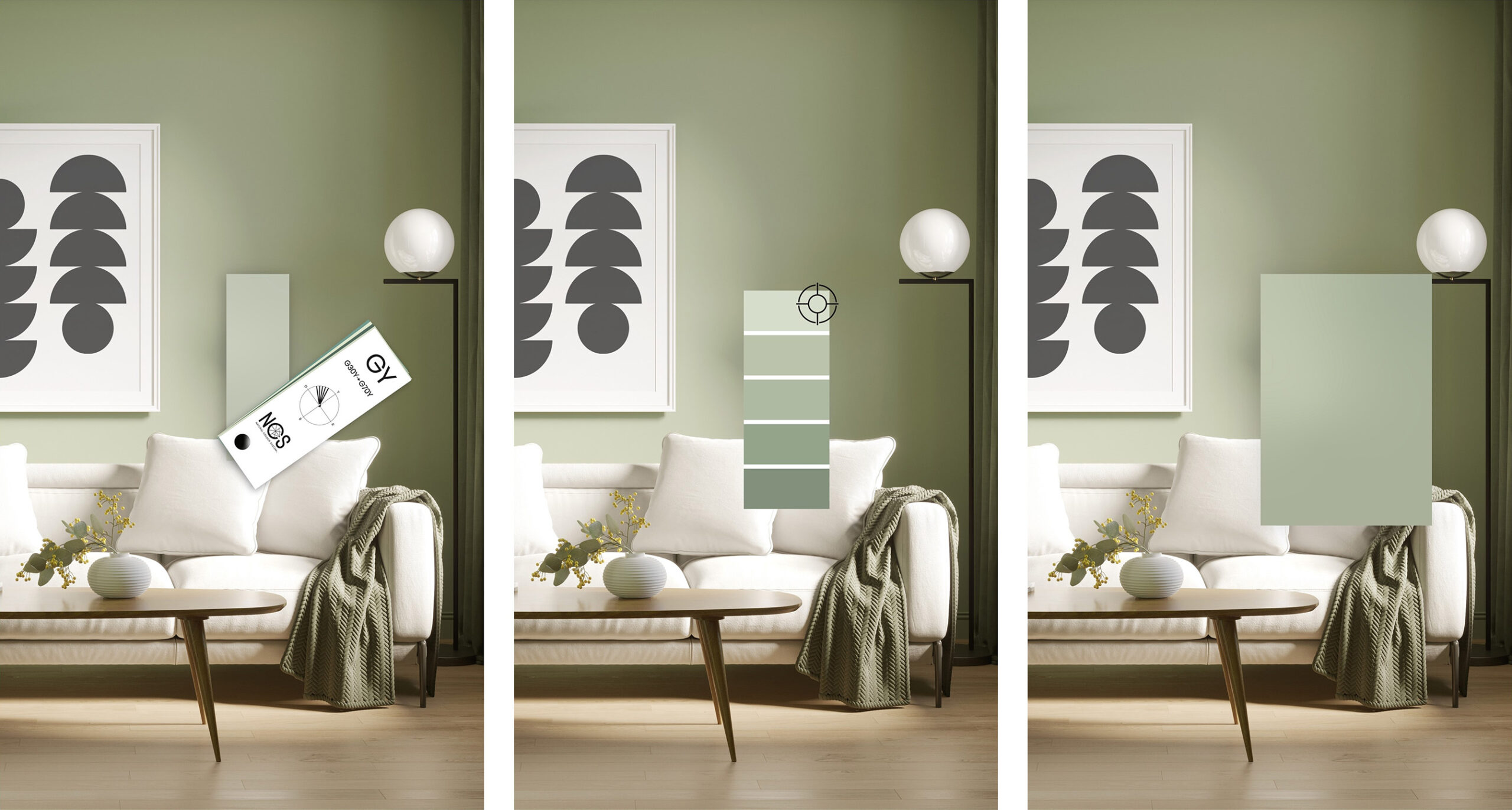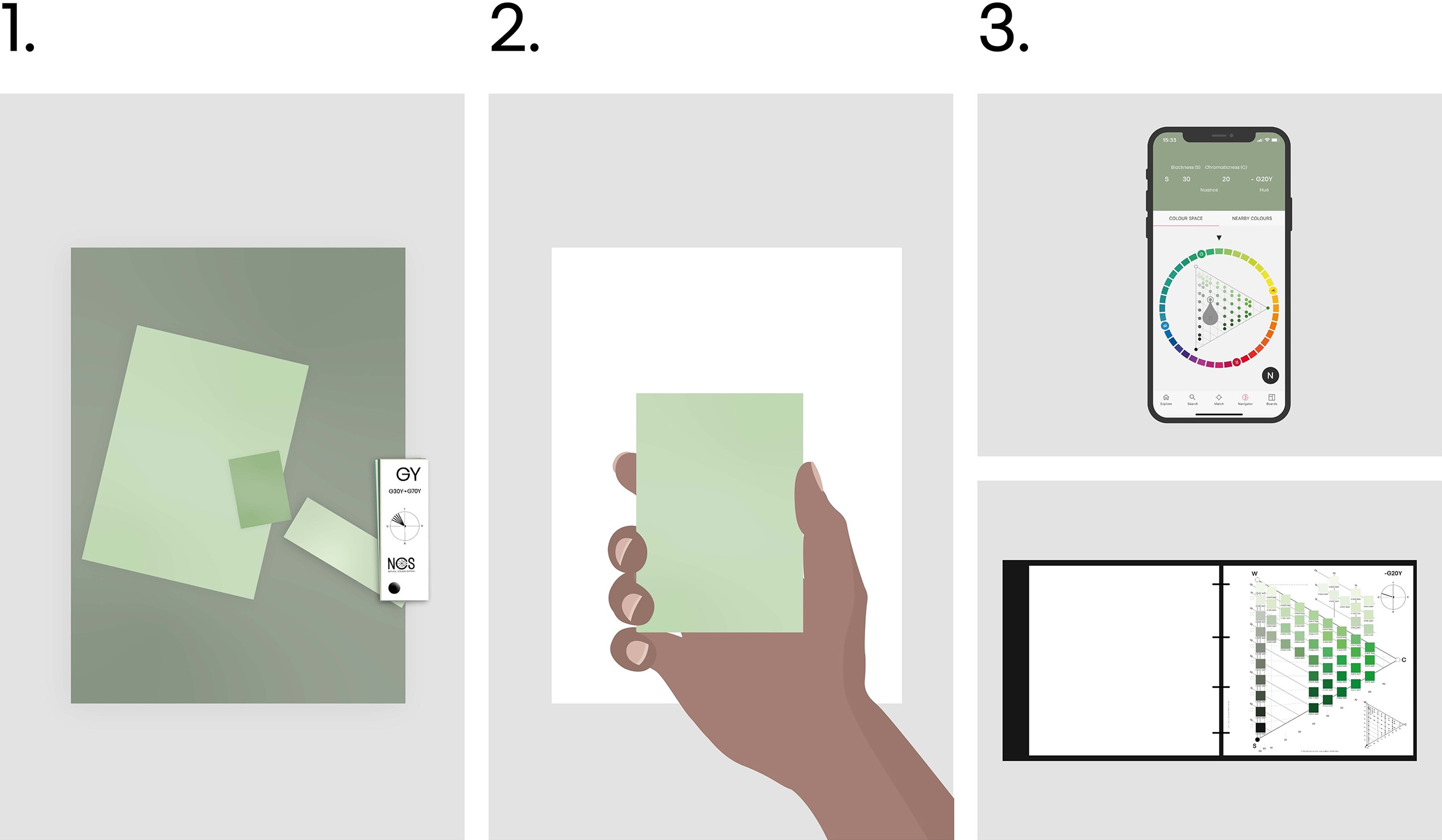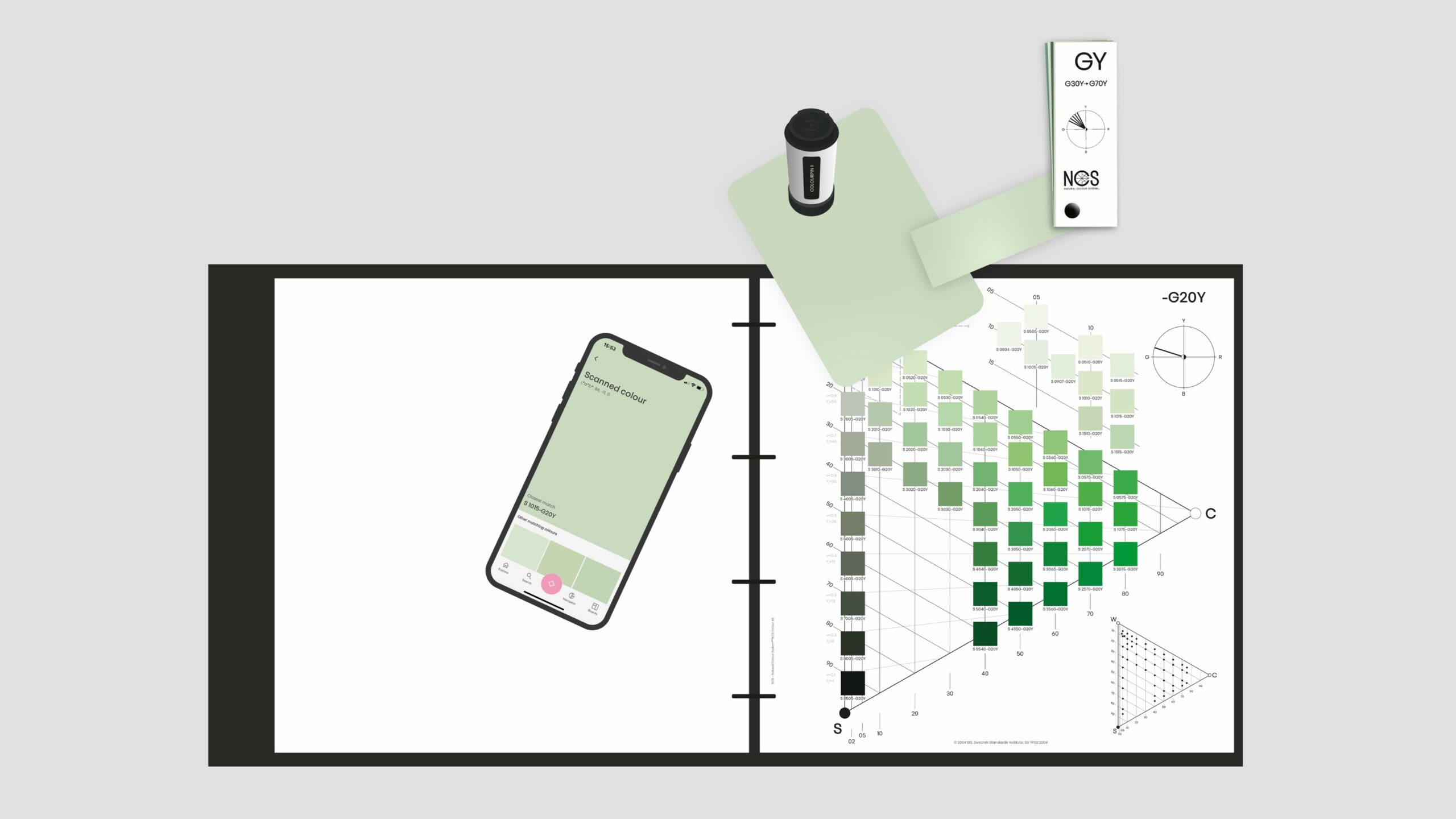Back to Course
20. NCS in kitchen studios III
0% Complete
0/0 Steps
Lesson 1 of 4
In Progress
Find your NCS designation
You are currently viewing a placeholder content from Vimeo. To access the actual content, click the button below. Please note that doing so will share data with third-party providers.
More Information In this video, we have just presented three scenarios that are common in a store when customers ask for a specific color.
Scenario 1
It often happens that a customer has found an NCS designation (an exact color reference) that they like and they come in to buy the color.
Now it’s a matter of giving the right advice.
What differences are there between the color sample and the color perception on the painted wall or the painted kitchen front?
The general rule of color change is that a color on the wall is perceived as more colorful and darker than the color sample. This means that many customers are not completely satisfied with the result after painting their room. This challenge can be easily avoided by taking a few minutes to give the customer expert advice.
With smaller color samples, the change in perception is greater than with large color samples. With multi-colored samples, it is even more difficult to understand the change because the colors are compared with each other.
What differences are there between the color sample and the color perception on the painted wall or the painted kitchen front?
The general rule of color change is that a color on the wall is perceived as more colorful and darker than the color sample. This means that many customers are not completely satisfied with the result after painting their room. This challenge can be easily avoided by taking a few minutes to give the customer expert advice.
With smaller color samples, the change in perception is greater than with large color samples. With multi-colored samples, it is even more difficult to understand the change because the colors are compared with each other.

Once we have discussed the general rule of color change between a paint sample and the painted wall, we can easily guide clients to the right color for their space.
Three simple steps:
Step 1: Look at the possible color swatches that match the color request.
Step 2: Place the single color swatch on a white background when it comes to colors for an interior.
Step 3: Adjust the shade of the desired color to achieve the desired color perception in the room.
Three simple steps:
Step 1: Look at the possible color swatches that match the color request.
Step 2: Place the single color swatch on a white background when it comes to colors for an interior.
Step 3: Adjust the shade of the desired color to achieve the desired color perception in the room.

Scenario 2
Another scenario is that a customer comes in with a color reference for which there is no NCS designation. In order to guide the customer to the perfect nuance for her, the first step is to understand the color reference. Capture the color sample with the NCS Atlas, NCS Block or Colourpin. If you have given the color an NCS designation, you can adjust the nuance so that it fits perfectly in the customer’s room. Always look at large color samples on a white background and adjust the nuance so that it is whiter and less colorful.

Scenario 3
Sometimes the color reference is not a color swatch, but a piece of fabric, vase or another object. If the surface is flat, you can easily scan the object. Note, however, that some textiles have different colors depending on the material. You can measure solid textiles with a color scanner, while you have to capture others with the NCS block.

